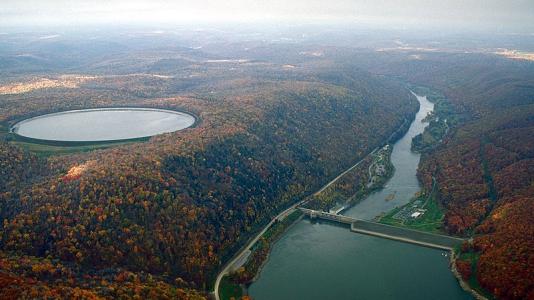
The grant, awarded by the Department of Energy’s Office of Energy Efficiency and Renewable Energy, will fund a project to improve the high-resolution computer modeling and simulation of advanced pumped-storage (PS) hydropower facilities, providing a comprehensive study of the technical and market operations, economics, and contribution of pumped-storage hydropower to power system stability.
The study area covers the Western Electricity Coordinating Council (WECC) region, the electricity transmission region for much of the Western United States and portions of Canada.
The WECC region is expected to see rapid expansion of variable renewable energy sources in the next two decades, and advanced PS designs have the flexibility and technical capabilities to integrate these clean energy resources into the electric grid.
Pumped-storage plants are presently the only form of large-scale energy storage that is fully commercially available, as more than 21,000 megawatts-worth of PS hydropower can be found around the country. These existing PS plants were constructed in the 1960s, ’70s, and ’80s and work somewhat like a large battery. To “charge” the plant, relatively low-cost electricity is used to pump water uphill from a lower reservoir to a higher one, typically at night, and generate power to satisfy peak demand on the grid.
However, a new grid—especially one that incorporates a growing share of variable renewables—is forcing scientists to re-examine how PS plants should be operated to provide optimal benefits to the grid.
“Defining the role for pumped storage is going to be more important than ever, because it will be called upon to serve a grid that looks radically different than it did when these facilities were built,” explained Argonne engineer Vladimir Koritarov.
“The reason that PS plants are increasingly important is that they can also help smooth out the variability of the contribution of wind and solar energy to the grid,” added Argonne engineer Guenter Conzelmann. “Though PS is best known for load balancing, it also provides a whole host of other services for the grid, and this grant will allow us to model exactly how the puzzle fits together.”
Both Koritarov and Conzelmann agree that modeling the economic uncertainties of pumped-storage hydropower will pose another challenge. According to Koritarov, PS provides a wide range of additional services to the grid that current models do not completely capture.
“Creating new high-resolution computer models that will be able to simulate the impact of these services builds on the 30 years of hydropower modeling we’ve already done,” he said. “It also presents a better idea of new advanced technologies for PS plants and their economic benefits to potential investors.”
“Pumped-storage plants are still expensive to build, but they represent the most economically sensible technology for large-scale energy storage that we have right now. To stimulate more investment, we need to improve the models to show the full value of the technology,” added Conzelmann.
Argonne has four partners on the project: Alstom, a large hydropower plant manufacturer; MWH, a Colorado-based hydro-engineering firm; Siemens, a well-known engineering conglomerate; and the National Renewable Energy Laboratory.